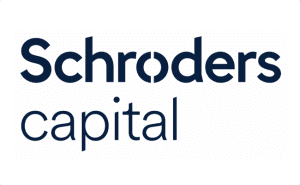How health reimbursement plans work

Health reimbursement plans, otherwise known as HRAs, health reimbursement arrangements, HRA reimbursement, and often (albeit inaccurately) referred to as health reimbursement accounts, are a popular choice among businesses of all sizes for their flexibility, predictability, cost-control, and customization. Wondering how health reimbursement plans work? It’s super simple.
But first, a little refresher. As an alternative to traditional group plans, these 401(K) style benefits put the power in the employees’ hands, and offering more personalization and choice for workers. They are designed to allow employers to reimburse for medical expenses and premiums tax-free.
→ Learn more about Health Reimbursement Accounts!
Understanding health insurance reimbursement from employer
There are two kinds of health reimbursement arrangements that you need to know about: The qualified small employer HRA (QSEHRA) requires your business to be small, with less than 50 Full Time Equivalent employees, and you can’t offer a group plan at the same time. The individual coverage HRA (ICHRA) is almost like a “super-charged” version of the QSEHRA. Instead of being capped at 50 employees, employers of any size can set up an ICHRA for their teams. There are also no contribution limits with this HRA.
→ Learn more about HRA plans.
Let’s dig in to how these health reimbursement plans actually work.
How health reimbursement plans work
Employers design their plan and set reimbursement allowances:
In general, employers have a lot of flexibility with how they design and implement a HRA. Especially with the 11 employee classes for ICHRA, employers can reimburse different groups at different rates. HRAs can be scaled to reimburse more for employees with families or by employee age. An overarching rule though is that employees must be treated fairly. Very important!
Employees sign up for the health insurance plan of their choice and pay their medical bills:
More than likely, your employees are going to be very excited about this option. Instead of being locked into a group plan that they had little to no input about, they can choose their own doctors and providers! They must be enrolled in an insurance plan to qualify for the HRA, but it can be a spouse’s plan (if it’s a QSEHRA), their parent’s (if they are under 26), or an individual plan that meets MEC.
Employees provide proof of their expenses:
After their doctor’s visit or a prescription refill, employees simply snap a picture of their paid bill (or receipt) and submit it for reimbursement. This may seem obvious but often gets overlooked! Employees have to prove they spent money on an eligible health expense before they can be reimbursed.
Employers reimburse the employee:
The key takeaway here is that payments are actually reimbursements. Employees will pay the insurance company or doctor’s office directly and then submit a claim to get reimbursed for their expenses tax-free.
While Individual Coverage HRAs do not have maximum or minimum reimbursement amounts, all QSEHRA reimbursements are subject to annual maximums and become available to employees on a monthly basis. This means employees can’t take the full annual amount in January—instead, the funds become available to employees each month.
For 2021, the QSEHRA maximum reimbursement rates are: for individuals- $5300/year, $441.67/month and for families, $10,700/year, $891.67/month.
Pro-tip: Unclaimed funds stay with the employer. If an employee does not use their entire reimbursement allowance, the employer keeps the rest. Sweet!
Have more questions about how health reimbursement plans work?
Take Command’s small business tax strategy HRA guide can help direct you to the best one for your business. We’ve compiled answers to some of the most common HRA questions from employees. We are ready to chat on our website if you have any specific questions about your business and how HRAs could help. Setting up a small business HRA is simple and quick, and our team is here to help if you need it.

We are so excited about these HRA coverage options and all the benefits they offer, that we wrote comprehensive, in-depth guides to the ins and outs of both.
This post was originally published in 2021 and has been updated in 2023 with all the latest HRA news.



